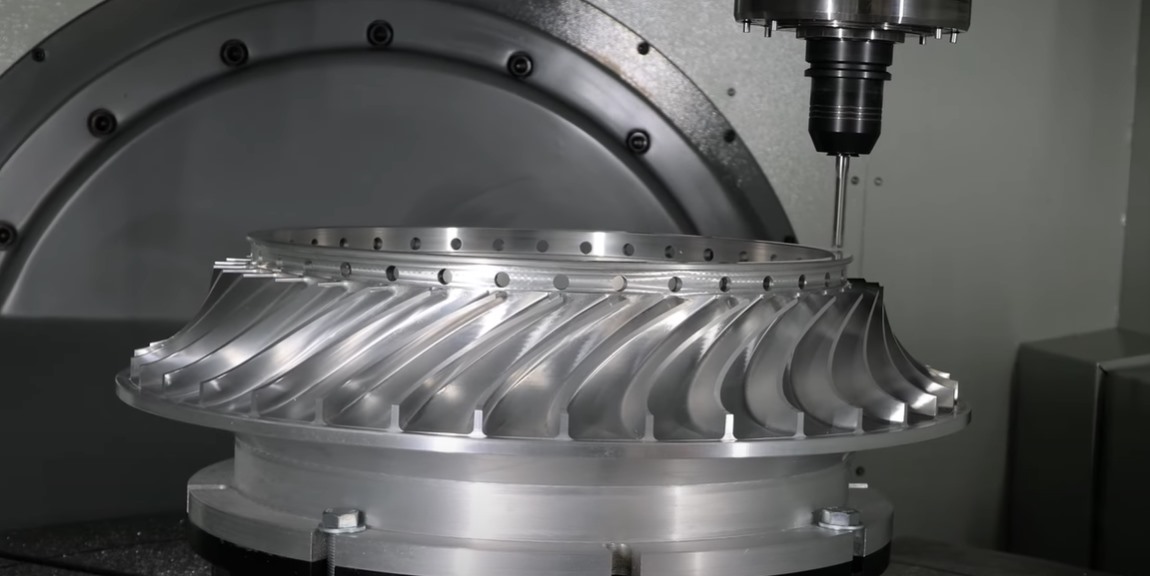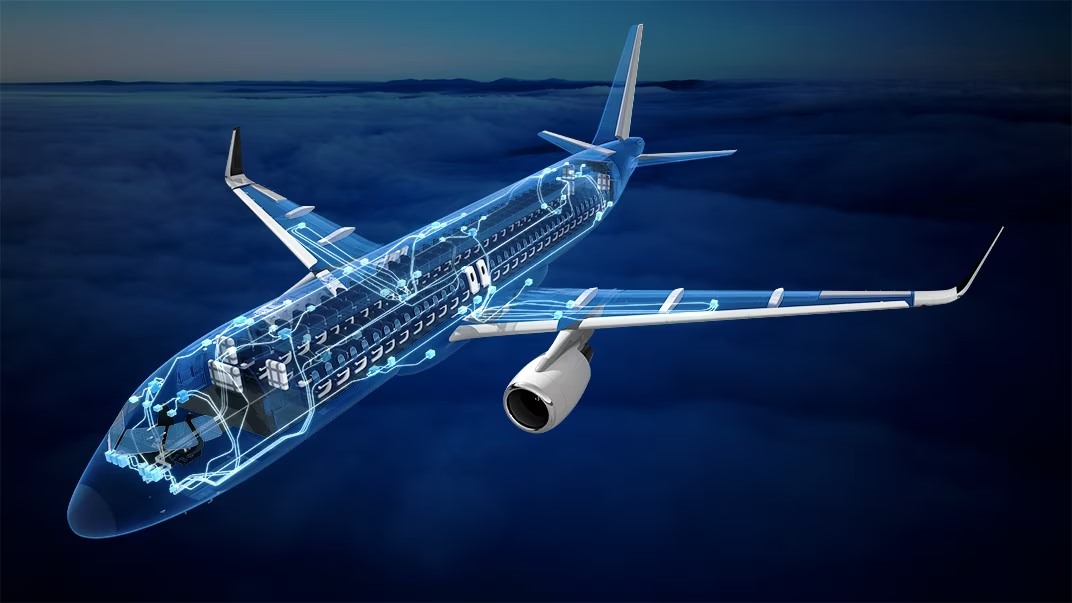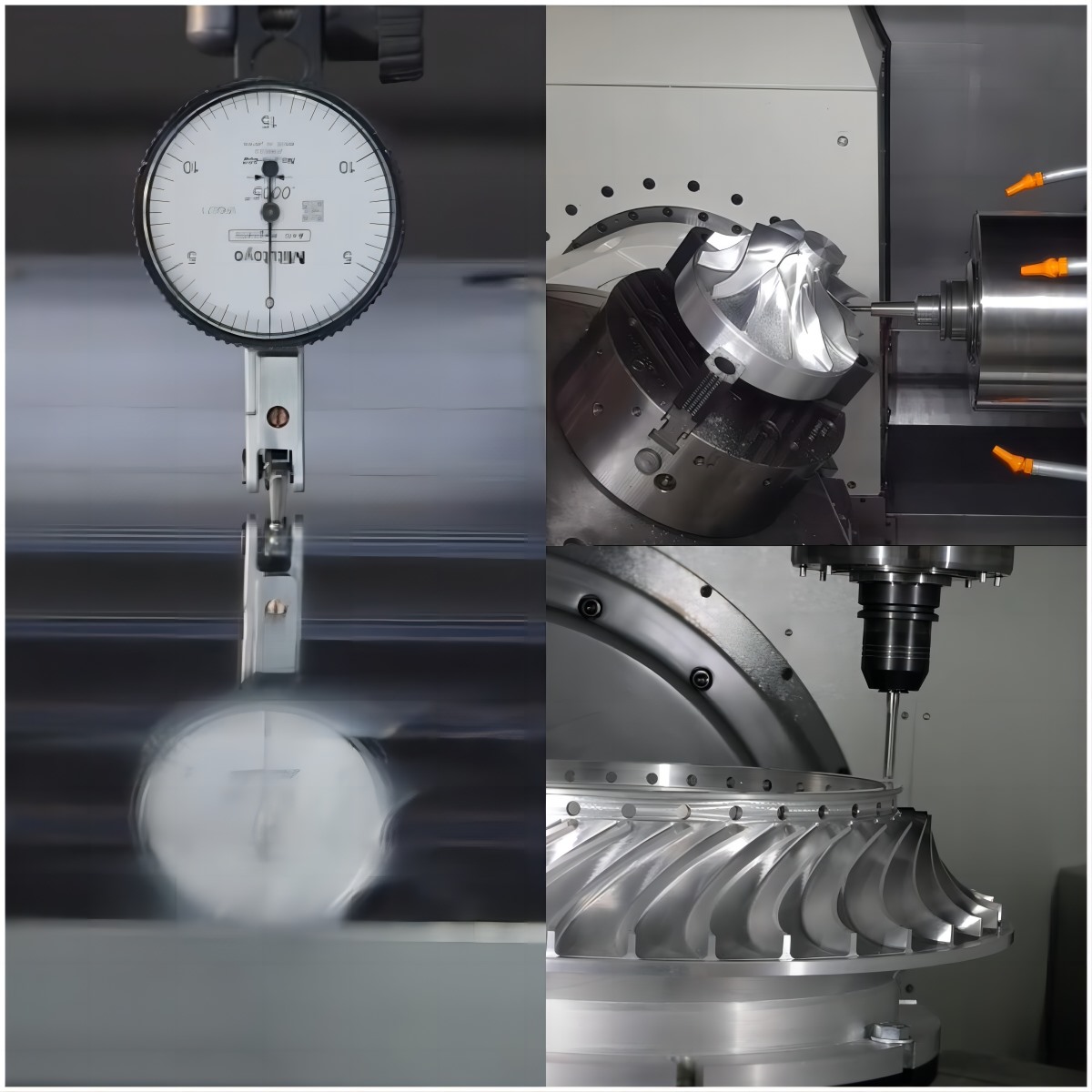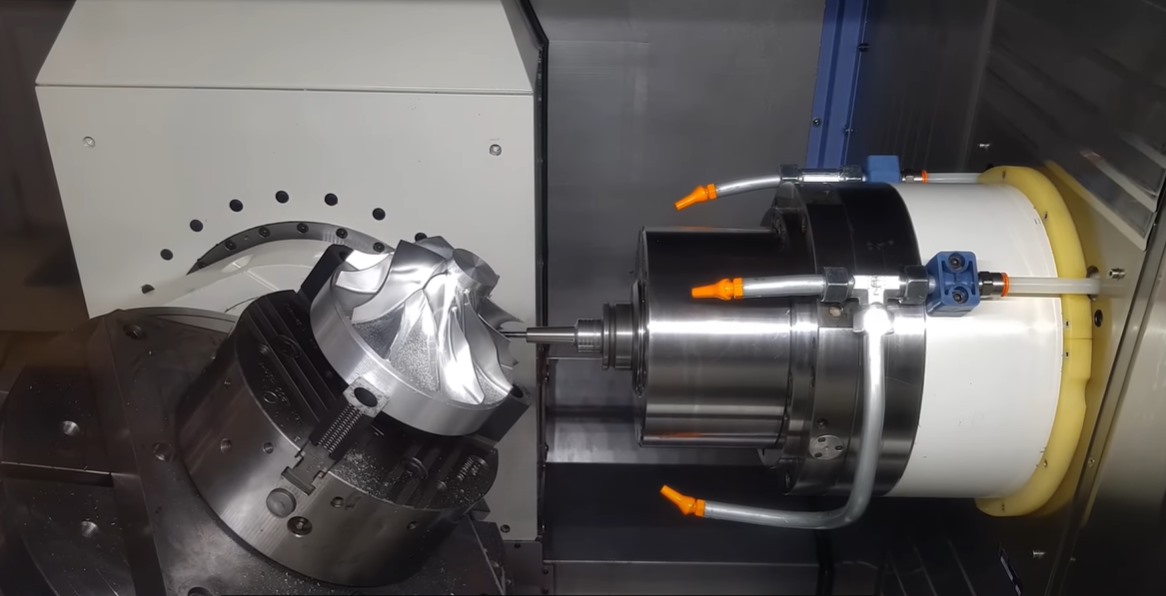Aerospace CNC Machining: Unlocking Precision and Efficiency
 Oct 06,2023
Oct 06,2023

Aerospace CNC machining has become a critical aspect of industries because it is no longer implausible. Safety is one of the most important parameters in any part of aircrafts production. It is not important what project you are working on, but the important thing is meeting the highest industrial standard, especially in the aircraft industry. There is no place for human error because it can lead to devastating results regardless it is smallest interior detail to big planes exterior.
Aerospace CNC machining processes requires extremely higher precession level in manufacturing process. Achieving the highest tolerance for metal and plastics components results in robust solution in aerospace engineering industries. Therefore, our focus in this article would be providing comprehensive detail on precision and efficiency in aerospace CNC machining.
Quickly view article content
What is Aerospace CNC Machining?
Applications of CNC Machining Aerospace Parts
Benefits of Custom Aerospace Machining
Materials Used in Aerospace CNC Machining
Challenges in Aerospace Precision Machining
Custom Aerospace Machining Case Studies
China Aerospace CNC Machining Factory: Tuofa Machining Manufacturing Capabilities
What is Aerospace CNC Machining?
The CNC aerospace machining processes is based on producing CNC machining aerospace engineering components for assembling and maintaining aircraft and space shuttles. Its companies utilized kits, parts and assemblies that are important for aircraft. The aircraft components like bushings, hinges, clamps, and other parts require to be made with high quality material. It is important to make sure that aircraft parts work properly without any chance of danger. Therefore, materials like Titanium and Kevlar are used in aerospace industries. Other materials are plastics, aluminum, copper, bronze, stainless steel and many more.

Importance of Precision Machining in the Aerospace Industry
Precision machining is very important in aircraft production. Therefore, there are very high standards of production for CNC machining in aerospace engineering in part making and assembling with very strict safety controls. This industry requires tolerance, dimension with efficiency in working of every part to avoid failure during flight. A single fault or defect can result in devastating results with loss of million dollars. Moreover, safety risk to end user is also involved and that is why aerospace industries work on meeting all requirements along with market demands. Qualified production services and using state-of-the-art equipment provides aerospace prototypes and end-user parts for aerospace industries. Refined and advanced post processing and inspection can provide high standard finished aerospace prototypes and assemblies.
Applications of CNC Machining Aerospace Parts
There are many applications of CNC machining aerospace engineering parts and assemblies. Some important ones are discussed below:
Aircraft CNC Components
Accuracy is the most important factor in cargo planes, fighter jets and passenger aircraft. Its requirements extend to every assembly of aircraft in production from the innermost layer to outermost part. Aircraft CNC component helps to make these parts work efficiently. For example, aircraft engine must run smoothly and use fuel. CNC aerospace machining parts helps in engine run smoothly. In the airplane cockpit, small, connected parts create a navigation system which moves the plane from one place to another. CNC machining processes helps in creating these assemblies with finetuning and tweaking critical parts like a plane’s wings ensuring a safe and efficient flight.

Rocket CNC Parts
When you hear a word like space travel, you immediately think of NASA and SpaceX. These companies create designs and manufacture the most advanced forms of spacecrafts and rockets for various purposes. Nevertheless, CNC aerospace machining has an important role in these abilities. Manufacturing the tiniest component of rocket body design is the most critical part of this process. It is essential to produce rockets to survive life in space. In this process, precision and accuracy are the most important parameters. Components must work properly along with ensuring safe operation of rockets. This also ensures the crew and spacecraft protection. Therefore, precision is the main focus in CNC machining of aerospace.
Satellite CNC Components
NASA and SpaceX are two well-known companies for space travel and their mission is to explore the facts hidden in space. Therefore, their satellites and spacecraft are designed with using high technology and craftmanship. They use CNC machines to build high standard rocket ships and satellites and manufacture their parts that build a rocket body design. These components must work properly without failing and therefore safety is the property in designing spacecraft. It is important to select an appropriate CNC lathe machine to avoid inaccuracies and to deliver the best components.
Benefits of Custom Aerospace Machining
CNC aerospace machining is the best for part production because it has many advantages. Some of them are explained below:

High Precision
Precision is a feature of CNC machining because it produces parts with high accuracy and consistency. The accuracy starts from a few micrometers with no error. CNC machining in aerospace engineering industry guarantees the part production with accuracy and prevents it from general parts failure which can lead to property loss.
Material Compatibility
The important factor in CNC machining is the material compatibility used by aerospace industries. For example, two important properties like strength and weight in aircraft production, it is important to consider those materials that can withstand strength. Most material will fail such as stainless steel. Although it is the most common structural material, it does not have those features that are required in aircraft production. Titanium or composite can be the best choice for this part. This is because steel is very heavy and can result in less fuel efficiency thus leading to expensive planes.
Complex Geometries
Components that are produced with traditional production methods are likely to failure due to less dimensional accuracy and errors. Because it involves human elements. But CNC machining can create parts with complex geometries and can guarantee the parts that are built with strict size, tolerance, and high-performance standard. They also ensure high efficiency without failing during service.
Efficiency and Cost-Effectiveness
CNC aerospace machining improves efficiency when it is utilized in the aerospace industry. The parts produced are automated, with high production speed and less time-consuming. This ensures the parts accuracy and consistency. This process is also cost effective compared to traditional manufacturing methods. Waste is almost minimal, and the parts produced do not require post working with dimensional accuracy.
Quality Assurance
Aircrafts parts that are produced with CNC machining ensures quality assurance. As the process is accurate with no errors and components are made with high quality standards in order to ensure safety of crew and property. It is important to select an appropriate CNC lathe machine to avoid inaccuracies and to deliver the best components.
Materials Used in Aerospace CNC Machining
Material is the most important element in the working of any machine or aerospace. The following materials can be used in aerospace engineering CNC machining.
Light alloy
two important properties like strength and weight in aircraft production, it is important to consider CNC machining materials that can withstand strength. Most material will fail such as stainless steel. Although it is the most common structural material, it does not have those features that are required in aircraft production. That is why aerospace industry choose lightweight metals like titanium or aluminum. These alloys are machinable for CNC machining and also have extraordinary features. Titanium is lighter than steel by 30% and has high corrosion and elevated temperature resistance. Therefore, it can work better as aircraft parts for exterior. And aluminum is lighter than titanium and steel but has lower strength. It is highly machinable and less costly than Ti. It is also a good option for many aircraft parts.
Titanium alloys, aluminum alloys, and magnesium alloys
Titanium is one of the most used metals in the aerospace engineering industry because of its outstanding properties. It has high corrosion resistance, high temperature resistance and lighter in weight with high strength. In commercial and military aircrafts such as Boing B787 and Airbus A380 and Helicopters use this metal. The components like discs, blade, shaft and casing are made of titanium in aircraft.
Aluminum is also a good choice as an aircraft material because it has high tensile strength and lighter in weight. It has high formability and can easily be CNC machined. Aluminum 7075 is the most famous alloy because it has good fatigue strength and is used in producing wings, fuselage and as a support structure in aircrafts. 6000 series aluminum can also be machined easily for aircraft applications.
High performance plastics
Plastics are also a good material for aircrafts application other than metals. They are lighter in weight and can be helpful in producing parts like ventilation duct, doors, wiring conduits, bearings or wall panels. The aircraft grade plastic is different than normal plastic and these are high performance material with higher strength, lightweight and fire-retardant material. These plastics are PEEK and other higher performance polymers and work the same as metal offering high precision that is required for aerospace engineering applications.
High strength steel
Steel has high corrosion and elevated temperature resistance and high tensile strength. It is easily machinable. It has most applications where high performance and durability are required such as robotics and aerospace. It has high weldability and cost effective than aluminum and titanium.
Composite material
Composite materials are the best option where lesser weight is required such as carbon fiber, glass fiber or reinforced epoxy. Glass fiber is mostly used in wind turbine blades and automobile, but carbon fiber has many applications in production parts for fighter jets and passenger aircraft. Other than these, Kevlar is also used for making aircrafts components.

Challenges in Aerospace Precision Machining
There are also many challenges in aerospace precision machining. Some of them are mentioned below:
Tolerances and Specifications
Aircraft components such as fasteners are required to have high tolerance and precision. The specification must be the same in each part. They also must maintain even in extreme conditions like pressurization, high loads, high temperature and chemicals.
Heat Management
Some materials like plastics have hard machinability for aerospace engineering applications like PEEK. It has high temperature resistance and tensile strength. UHMVW is also sensitive to heat and can be distorted if not machined properly. Glass filled plastics like Ultem have high abrasion to cutting tools and are likely to delaminate it cutting speed is not maintained properly. Therefore, heat management is a very important factor in aircraft material selection.
Tool Wear
Aerospace components such as compressor housing and engine have many external cavities. It is required to select that material that has tool wear properties. These cavities creation is time consuming and create a lot of scrap material. It also produces residual stresses in parts which can ultimately cause warping or deformation. This also concerns other issues like tolerance and precision in parts. Therefore, parts must have tool wear properties to avoid deformation.
Environmental Considerations
The demands of aerospace industry are constantly fluctuating depending on which planes are in service or being repaired. These demands must consider environmental considerations to avoid damage to the environment. Demand for a part can be non-existent to thousands overnight and it’s not practical to have all those parts in your hands. Therefore, companies must focus on quick turnaround suppliers and keep the time and budget maintain along with environment consideration.
Custom Aerospace Machining Case Studies
Boeing's CNC Machining
Defense, space and security is the second largest Boeing company that offers products from sea to outer space. It is a leader in developing, producing, and maintaining fixed wings, rotary wing aircraft, commercial and government satellites. Its portfolio has main six market areas which are military rotorcrafts, human space exploration, satellites, autonomous systems and commercial derivates. 3d printed parts by CNC machining processes ensures the spacecraft integrity. Core capabilities of this company is developing and producing CNC machined aerospace parts to ensure the efficiency and high performance of components.
SpaceX's Innovative Approach
SpaceX has main focus on reusable rockets and spacecrafts to reduce cost of space launches. It also focuses on developing new technologies that help human settlement on other planets. Innovation in technology is the main area in SpaceX’s, which is cost effective and makes space for exploration more accessible to companies and individuals.
Advancements in Satellite Component Manufacturing
3d printing technology ensures the integrity of spacecraft by reducing cost and speeding the production for increased capable spacecrafts. Aerospace corporation has contributed to a 3D-printed omnidirectional antenna assembly for telemetry. It also track and command for use on two satellites for the Global Positioning System (GPS) and has become a first 3D-printed GPS configuration item to be space-qualified.
China Aerospace CNC Machining Factory: Tuofa Machining Manufacturing Capabilities
TUOFA CNC machining processes offers a variety of services and has expertise in different manufacturing services and surface finishing.
Aerospace Mechanic: Expertise and Experience
TUOFA offers CNC machining products for aerospace parts from drawing, designing, material selection, production cost accounting, processing and assembly, inspection, and delivery, it also offers after sales services for aerospace parts with great experience and expertise.
5-Axis CNC Machining Equipment and Technology
It provides a huge selection of material for CNC Milling parts. It also provides a surface finish and aesthetic appearance with low and high-volume production. It also custom 5axis CNC milling parts and CNC turning part manufacturing.
AS9100 Machine Shops
Tuofa is one of the good manufacturers for CNC machining aerospace parts, CNC tuning parts, CNC Millin parts, auto lathe parts, it also offers stamping parts and sheet metal parts with 3dprinting integration services.
Additive Manufacturing Integration
Tuofa offers great services in producing CNC aerospace parts with 3dprtingit integration. It is done by using digital technology material printers at TUOFA by making models in mold manufacturing, industrial design, fields.
Sustainable Machining Practices
Sustainable machining practice offers in TUOFA by giving services in CNC aerospace machining parts, CNC tuning parts, CNC Milling parts, auto lathe parts.
Conclusion
The aerospace CNC machining processes is based on producing CNC machining aerospace components for assembling and maintaining aircraft and space shuttles. Aerospace CNC machining requires extremely higher precession level in manufacturing process. Achieving the highest tolerance for metal and plastics components results in robust solutions in aerospace industry.
There are many applications of CNC machining processes such as aerospace parts and assemblies, rocket CNC and satellite CNC parts production. If you are looking for a reliable supplier for CNC machining, TUOFA offer great services with high expertise in CNC milling and machining for aerospace parts. For more information please contact info@tuofa-cncmachining.com
 Tel/WeChat:
Tel/WeChat:  Email:
Email: 
 Home
Home
 Understanding the Intricacies of Milling vs Turning in CNC Machining
Understanding the Intricacies of Milling vs Turning in CNC Machining 







